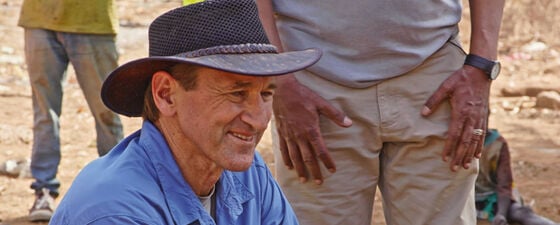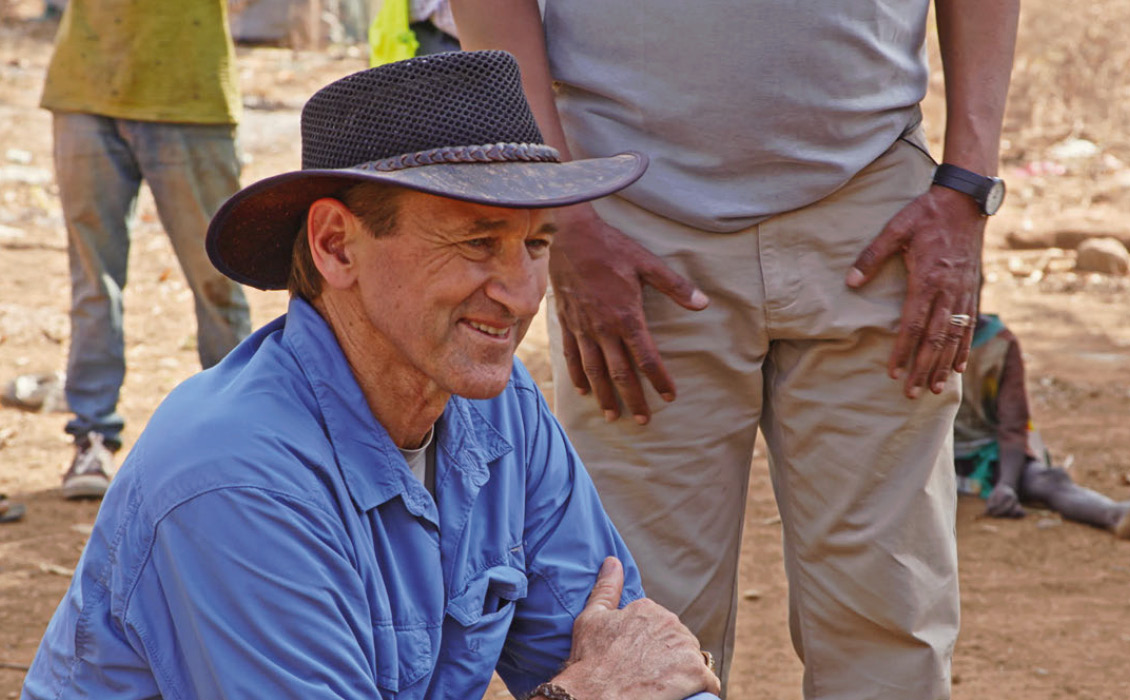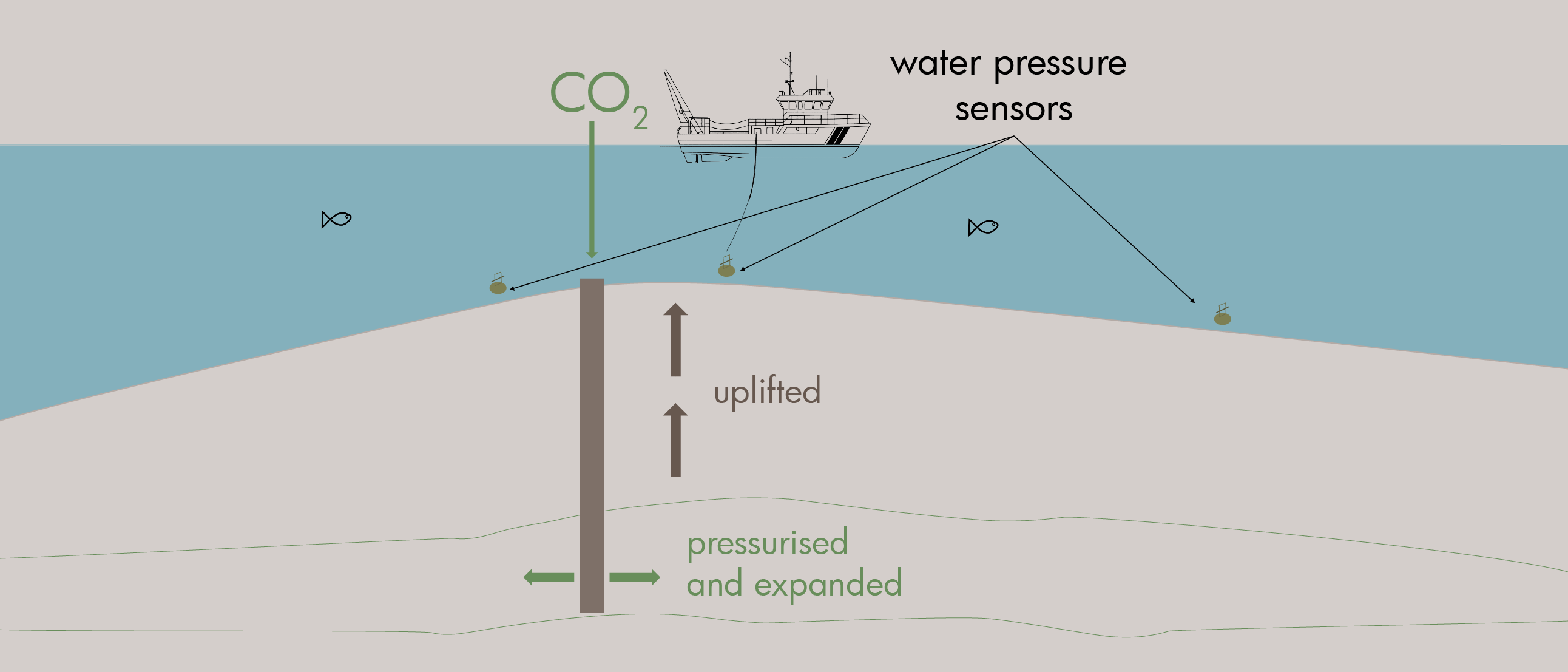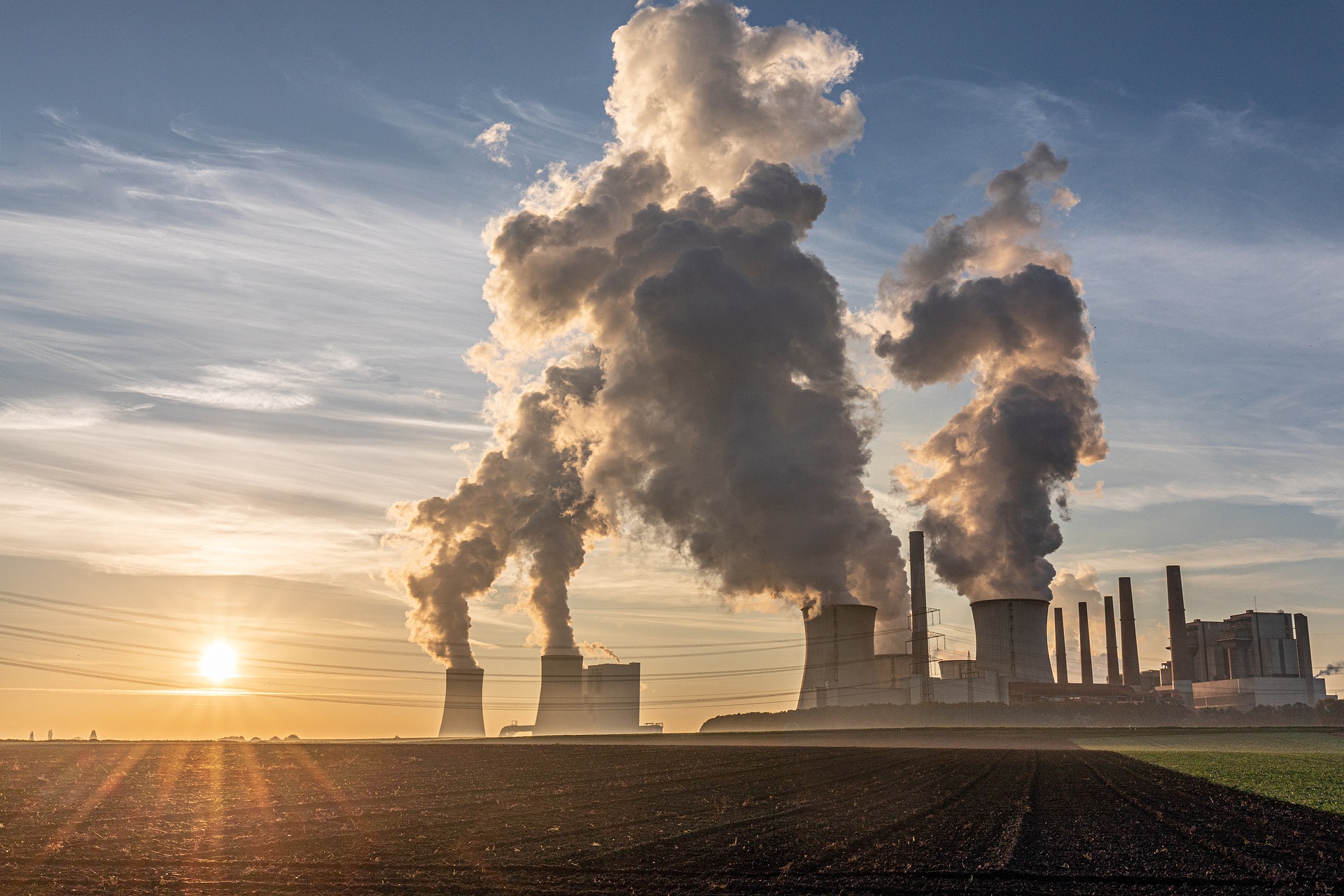Q&A with Internationally renowned energy expert and public speaker, Dr Scott Tinker.
Negative public opinion and the accelerating climate emergency create significant challenges for the oil and gas industry. Do you see an effective way to communicate to the public how fossil fuels are part of the transition to cleaner energy?
You use some interesting words like climate emergency, cleaner energy and energy transition. Words matter a lot and we must define them. Clean is a fascinating word. I think if we were to ask a global sample of people, we would get a lot of different definitions. In Western Europe and the US, many take it to mean, almost exclusively, CO2 and methane emissions. But around the world, people in emerging and developing economies understand that the land, air and water are also vital to a clean environment, human health, and of course the health of all species on Earth. So clean is not just greenhouse gases. It’s the four pillars of atmosphere, land, air and water.
When people in Western Europe and the US think about clean energy they think solar, wind and electric vehicles. Governments are mandating and massively subsidising these now. So to approach people indoctrinated in this type of clean energy thinking, I try to broaden the conversation and ask if they think that mining is clean? That usually provokes the response, “Well, no, of course not, mining isn’t clean, it’s a dirty process.” So, I ask if dumping chemicals, batteries, and other materials into landfills is clean? Or large-scale chemical manufacturing or metals production? “No, that’s not clean.”
Then I ask if electric vehicles are clean? The usual response is, “Of course, they’re zero emission!” So I ask what the fuel that runs electric vehicles is? A battery, which was mined, manufactured and eventually (despite some limited recycling) dumped back in the earth. Suddenly, we’re having a different conversation about the land and the water and the atmosphere. And the definition of clean.
I think it’s important, because they know I’m concerned about climate. Just not exclusively. So, as we think about a clean energy transition, we need to think about all four pillars of the environment. It’s a very important critical thinking, communication challenge. I speak to young people all over the world, including recently to a private girls’ school in London.
They are smart, and curious. I push them to think critically, beyond ‘clean and dirty, good and bad’. Beyond a binary conversation. Communication starts this way, a few minds at a time. And broadens through their social networks.
I think people are interested in science, so it’s incumbent upon us to talk in schools, to civic gatherings, scout troops and church groups and begin to expand the education. Most of the people I encounter are ready to learn. Some don’t like everything I tell them, but they say, “Well, you’re showing all this data, and you have references for everything, so I’m going to look that up.” That’s what science is about. Questioning. Hypothesising. Experimenting. Testing. Never settled. Always more to learn.
Much of the world has been brought out of general extreme poverty, because of the availability of cheap energy. If we suddenly decide that we should not use hydrocarbons anymore, that’s a decision that can be made, but there are consequences to go with it. That is something that many young people, who are very concerned about climate change, don’t seem to fully grasp.
Let’s not challenge that directly, but suggest instead that if we eliminate hydrocarbons we’re likely to harm the world’s environment. And they’re going to think, “What? What are you smoking?” And then you explain that the data show that the cleanest air in the world is in the most economically rich countries. Same for the cleanest water, which you can drink from the tap, and the cleanest soils. I don’t drink water from the tap in most of the 60 countries I’ve been fortunate to visit, for good reason. And the soils are often polluted and the air is bad. Poor countries simply cannot afford to invest in the environment. They have other more pressing challenges. Developed, healthy economies invest in the environment and have the regulatory systems to enforce clean-up.
Energy sources, particularly fossil fuels, have negative impacts on the environment, to be sure. But in a larger sense they have made for a cleaner environment by creating wealth. We don’t get rid of hydrocarbons per se, we clean them up. This is a message they’re likely not going to have heard. But then we can look at the data again. At maps of clean air, clean water and clean soils.
In terms of climate and emissions, which countries are going to capture their emissions? Rich ones, not emerging and developing ones. Why? Because rich ones can afford to. So, there’s an important directional link between energy, the economy and the environment.
As geoscientists we love ternary, or triangle, diagrams. Let’s take the points on the triangle to be clean environment, cheap energy, and a reliable economy, which must add up to 100%. If I want 100% clean, I get 0% reliable and cheap. The world won’t do that. If I want 100% cheap, I damage the environment. If I want 100% reliable, it won’t be cheap! We must come to the middle and find the balance. I call this the ‘radical middle’ where big challenges are addressed.
So, the conversation isn’t trying to explain to the public how good their lives are thanks to energy. Even if true, they feel guilty about that. When they realise how many people still subsist in economic poverty globally, they will agree that it makes sense to lift the emerging and developing economies up with energy. And the unexpected benefit is that then those economies can become part of the global ‘clean-up’. Energy is not just a poverty conversation; it’s also an environmental conversation.
You mentioned earlier the transition; again, people would define what that means differently, and in my mind, a successful transition is from poverty to prosperity. And that’s enabled by energy. If you were to get rid of oil, gas, coal and nuclear from the energy mix today, you would end up with maybe 10 to 12% of the world’s present energy, half of which is hydro. First, the world is not going to do that. More importantly, they shouldn’t.
The big oil companies are trying to become integrated energy companies but, in the meantime, their underlying businesses are all driven by oil and gas production. They have to appeal to not only the public but their shareholders and stakeholders. Do you feel these two challenges are somewhat mutually exclusive?
I don’t think they’re mutually exclusive. Shareholders, at the end of the day, expect to make money, and being profitable is a good thing. Profit provides taxes and other capital to clean up the environment. And the public wants to see energy companies move towards ‘clean’ energy. But as discussed previously, the public, and politicians that represent them, can be a bit myopic in terms of the definition of clean.
We can look at other industries not under the public microscope yet, like the tech sector, auto industry, or battery and solar panel manufacturers. Think about the massive chemical manufacturing plants for polysilicon, batteries, and the like. And when panels, turbines and batteries wear out, as we discussed earlier, we dump them in landfills. As these ‘clean’ energies scale up, it’s going to be really impactful on the environment and not in a positive way.
So, I don’t think the challenges of profit and environmental stewardship are mutually exclusive, but instead must become mutually inclusive. Companies, governments, and educators need to do a much better job of understanding and explaining these relationships.
I’ve talked about the four pillars of the environment and lifting people out of poverty. These fall under the broad theme of Environmental, Social, and Governance (ESG). Companies are getting measured on ESG performance, yet there is not consensus on the metrics. How do we measure ESG rigorously? Same challenge for Carbon Capture Utilisation and Storage (CCUS). Who’s going to verify how much CO2 is captured and remains safely in place? And then there are carbon offsets. It’s a bit like the Wild West: people are buying and selling offsets that have little if anything underpinning them.
In summary, I think energy companies will evolve to become integrated energy companies, but oil and gas will, and should, remain an important part of the mix.
There is a challenge in replacing fossil fuels as a high-density energy source. The UK is a good example: we have massive wind farms off the coast, and they’re fantastic when the wind blows, and we’re a particularly windy country, but there are still periods when there’s no wind and then we have had to fire up a coal power station to meet demand. So, my question is really about other potentially renewable sources of energy, for example, geothermal, tidal, and I suppose in a different category, nuclear. What are your thoughts on the future potential of expanding these sources, and I wondered if you had any views on geothermal, because that tends to be very localised now, but perhaps there are ways of broadening this energy source?
Before we get to geothermal, it is important to set the stage with an understanding of energy density: how much energy is available in a square metre of land. That’s called surface power density. Or we could look at energy density by volume or weight. It turns out, biofuels are the least dense of all, requiring tremendous land areas to grow plant material, and a large amount of energy to convert a carbohydrate (plant) to a hydrocarbon. These processes of growing, harvesting, transporting, converting, transporting again and burning have major environmental impacts.
Then come batteries, solar and wind, which are very low density, and so you need a lot of stuff – panels and turbines – to collect and store the sun and wind. And all that stuff is mined. This density framework helps us understand that although the sun and the wind are renewable, everything to collect and store the sun and the wind comes from the earth and goes back into the earth when it wears out, and must be made again. Unfortunately, this is not renewable. Oil, methane, hydrogen, uranium and thorium are hundreds of times denser than the sun and the wind. The bang for the buck is much better. Explaining this requires a bit of a conversation. It’s not a snappy one-liner like ‘clean and sustainable’, or the binary portrait of energy as ‘good–bad, clean–dirty, believer–denier’. But unfortunately, these simplified discussions present choices that don’t actually exist, and the sooner we get people to begin to think critically, the better.
As an example, we can look at the Big Chill that happened in February in Texas. Texas is a very windy state, like the UK. We are approaching 40 gigawatts of installed wind now, and it keeps growing. Wind is also intermittent, so you need a lot of backup available when the wind is not blowing. And that idle backup is expensive. It adds significant costs to the consumer.
Timing really matters when reviewing the history of the Big Chill. First the solar panels got covered in snow, and then wind power diminished greatly. From 7 to 14 February coal and nuclear held steady and natural gas grew tremendously from its typical winter levels to meet growing demand. Then on 15 February, with continued freeze, a few coal piles froze and coal plants went down, one nuclear reactor cooling pump froze and a reactor went down, and natural gas began to decline, because electricity wasn’t being prioritised to the gas pipelines and plants to keep them from freezing. Blackouts began, and it took another week of mostly gas, coal and nuclear until the 22nd when everything got back to a ‘normal winter’.
You could see that play out in real time and understand the impact of intermittent solar and wind, and what happens when you can’t access dispatchable coal, nuclear and gas. Plenty of finger pointing is still going on, arguing around the data. The point is, each type of energy has pros and cons. A careful cost–benefit analysis is needed to determine what makes sense in terms of structuring for the future.
As another example, just this week President Biden announced an effort to go to 45% solar for electricity generation in the United States by 2050, which is only 29 years. 45% solar! We have about 3% now. Like everything, solar is a resource and we develop the best regions first. Continued solar development will be in less favourable areas, and therefore less efficient. And of course, there is night, when something else is needed to back up the sun. And that something – natural gas, coal or batteries – adds significant cost to the consumer. Physics and economics need to work hand-in-hand with passion and politics.
Which brings us to geothermal. There’s high-heat gradient geothermal to make electricity. In Iceland and other places with active plate boundaries that heat is near the surface. Sounds great, but most places aren’t like that, so you need deep wells to bring up hot fluids and convert that to electricity. They are more expensive because you need more infrastructure.
Then there’s low-heat geothermal, like a heat pump. Cool fluids flow through your home in the summer, and help supplement the heat in the winter. There’s a lot of good potential for that kind of geothermal. But like all primary sources of energy, geothermal is a resource, and it’s going to take subsurface understanding to develop efficiently and economically, because it’s not everywhere. Even in a high-heat source scenario, such as Iceland, as you produce the heat you’ve got to manage the geothermal reservoir as you deplete it. It requires subsurface knowledge and understanding.
Hydrogen represents another opportunity for subsurface scientists, and it comes from splitting the methane molecule (blue hydrogen) or the water molecule (green hydrogen). Steam reforming of methane is cheaper today than hydrolysis. Hydrogen is an energy carrier. It can be burned to make heat and electricity. It can also be used in fuel cells for transportation, with no emissions out of the tailpipe. So that helps with transportation emissions challenges.
Hydrogen is also interesting as a storage strategy to back up intermittent energy. A fuel cell has a lot denser energy than a battery in terms of energy per unit weight. To use hydrogen at scale will require it to be stored in large volumes. Hydrogen has seasonal storage capability by utilising salt domes, geologic formations or engineered containers so you can get it when you need it, and also large discharge capacity.
So, to summarise, opportunities for the oil and gas industry include such things as producing hydrogen, methane, and geothermal heat, and storing hydrogen and CO2 (CCUS). These are all areas that reduce emissions and offer opportunities for people that understand the subsurface.
Loss of personnel and key geoscience skills from the industry in North America and Europe is an important issue. Particularly in Europe, encouraging young people to want to engage in this field of study is a major challenge because they perceive it as being a dirty science.
It’s difficult in the US because the voices that paint the story are very powerful, well-funded, and use clever terms like clean and dirty. Therefore, kids and adults think oil and gas are dirty. I work hard to explain that if you’re passionate about the sun, the wind and batteries, go into geology because that’s where you can have an impact on developing and cleaning up the mining, manufacturing and the landfill disposal required for solar, wind and batteries. All the solar panels, wind turbines and batteries are mined from the earth, and there are jobs there. The earth is where rare earth elements and metals and chemicals come from, and where they get disposed later. We need geoscientists for these efforts.
I sometimes think the only way that we can address the challenges that we face as a species right now are just to use significantly less of the planet’s resources. I don’t know if science and technology are going to develop fast enough to get us out of this hole. Therefore, it comes down to using less resources and ultimately it is probably a population issue. We need fewer people on the planet. Do you agree with any of this, or have a particular view on it?
I often wrap up my talks up with thoughts about population, healthcare, immigration, rights of women, environmental investment, and the like. In terms of fewer people, fertility rates are directly tied to education. The more highly educated a population is, the lower the fertility rate. The US would have a declining population right now if it weren’t for people immigrating. The same is true for most of Western Europe. So how do you broaden education globally? Well, it takes energy to light the homes and schools, and provide technology and access. Education is something we should all be passionate about. It helps address so many important issues.
But I have a slightly different take on the issues of declining resources. The world has actually run out of very few things so far. When supply of a commodity is stressed, price increases and technology advances help to produce more, such as oil and natural gas from shale, or technology creates a better replacement, like the car for the horse, or kerosene for whale oil. Or the smart phone! When I was young, I was in a closet on a landline connected by a long wire, trying to talk without everybody hearing. The cell phone, this little technological marvel in my hand, is better technology. It’s so much more than a phone. By contrast, is an electric car really better than a combustion engine? More efficient motor, but much less efficient fuel, called a battery. Trade-offs.
These are some of the open and civil conversations we need to be having, and I appreciate meeting with you today.







